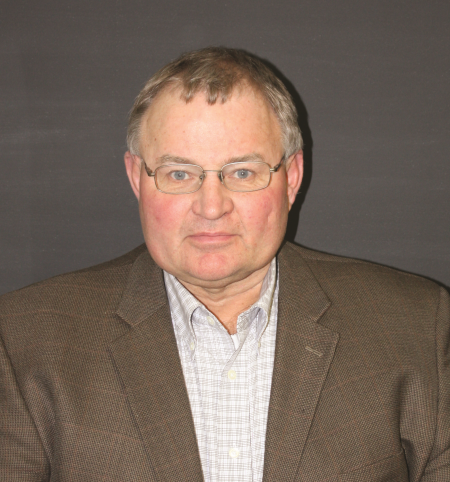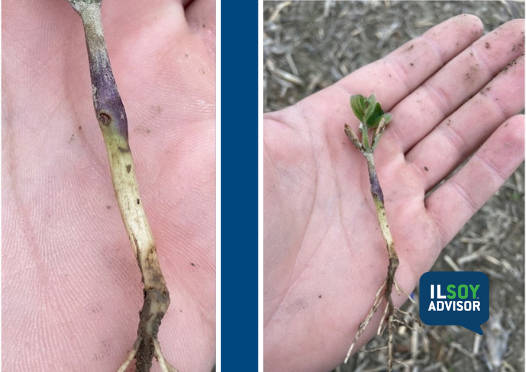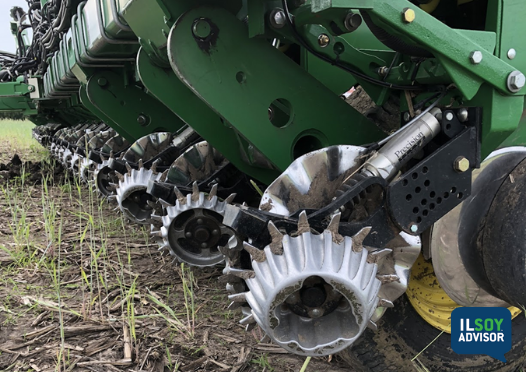ILSOYADVISOR POST
Agronomy: Considerations for Late-Planted Soybeans
Soybeans entered yield loss territory after May 10. With the heavy and frequent rainfall events plaguing parts of Illinois soybean planting has been delayed. Weather-related delays are beyond the control of growers, who recognize the importance of timely planting and are equipped to plant quickly.
If you were caught by heavy spring rains that delayed planting, several management considerations can still help you maximize soybean yield.
Stay with the same maturity group. It is not advisable to switch to an earlier maturing variety unless planting is severely delayed (after June 15) and you worry about frost damage in fall. In late-planting situations with fall frost risk, shorten maturity 0.5 to 1.0 unit. Regardless of planting date and maturity, soybeans will flower at the same time due to photoperiod sensitivity. Delayed planting delays maturity, but less than you might think. A 3-week delay in planting slows maturity only a week.
Planting date matters. Fuller-season (later-maturing) soybean varieties have greater yield regardless of planting dates. And yields decline regardless of maturities when planting is delayed till late May or June. University research has shown that there is no yield advantage to switching to an earlier maturing variety when planting is delayed to the May to early June time frame.
Managing Late-Planted Soybeans.
- Plant when soils conditions are correct.
- Be cognizant of the crop insurance planting deadline for insurability.
- Stay with the same relative maturity until June 15.
- If planting after June 1, increase seeding rate by 10%.
- If possible, narrow-up the rows from 30” to 15 or 20”.
- Late planting does not alter the need for weed control or pest or disease management.
- With lower yield potential, there is less opportunity for return on investment with a fungicide application.
If you find yourself planting soybeans later, outside the optimum window, remember to manage them as all your other soybean acres with an eye on keeping costs under control to preserve profitability.
Agronomist Dr. Daniel Davidson posts blogs on agronomy-related topics. Feel free to contact him at djdavidson@agwrite.com.





Comments
Add new comment